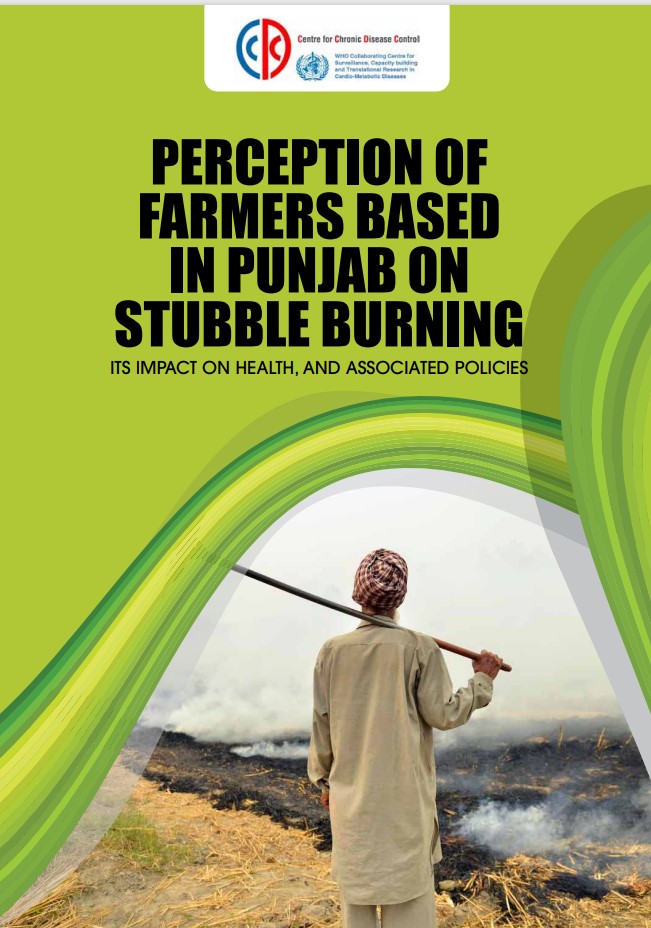Research
Air Pollution And Human Health
Stubble Burning in Punjab: Perception of Farmers based in Punjab on Stubble Burning
This study is a follow-up to the report “Stubble Burning in Punjab: Assessing the Gaps between Policy and Implementation” that Centre for Chronic Disease Control (CCDC) published, in 2021. Stubble burning is a threat to human health and environmental health. It is known to have negative effects on the respiratory and cardiovascular health of populations. It also pollutes air and deteriorates the quality of land. This study aims to understand the perspectives of farmers from Punjab on issues related to health and policies associated with stubble burning. The study was conducted in two districts of Punjab – Sangrur and Hoshiarpur, with a sample size of 230.
Impact of visual aid on generating awareness about air-pollution in a hospital-based setting in Coimbatore, India
A survey conducted in 2017 on perceptions and attitudes of the public towards air pollution showed that majority of people were aware of what air pollution is but lacked understanding on technical aspects such as Air Quality Index and Particulate Matter (AQI and PM). Thus, it is important to educate people about air pollution so that they can make informed decisions to protect their own health, change behaviour to avoid polluting air and raise their collective voices to influence policy making.
Research also indicates that the impact of visual aid lasts longer in the brain and works well when information is paired with significant images. Visual aids increase recollection of memory which means messages delivered through visual aids last as long-term memory. Keeping this in mind, a study is being conducted to evaluate the knowledge and perception of hospital staff on the issue of air pollution. The visual aid used for this assessment are the TV monitor displaying AQI and health advisory and information on air pollution installed in a H.E.L.P member hospital in Coimbatore as part of CHAMP project.
The study is underway.


